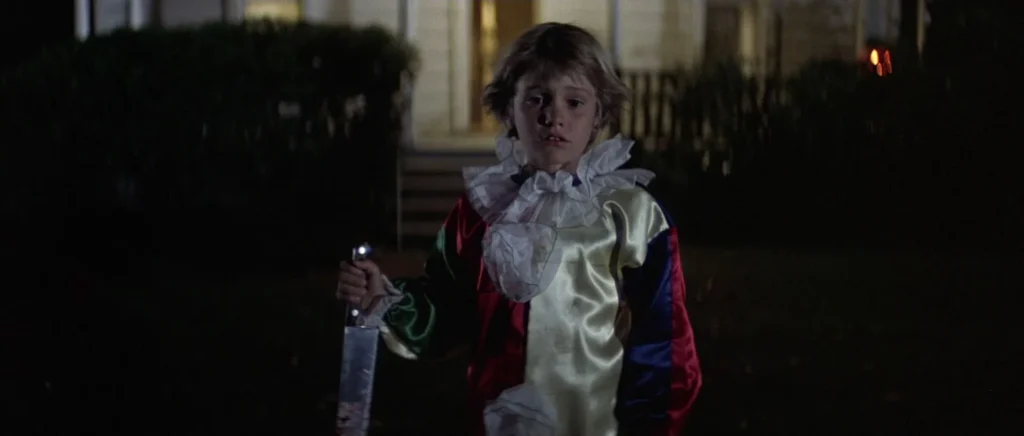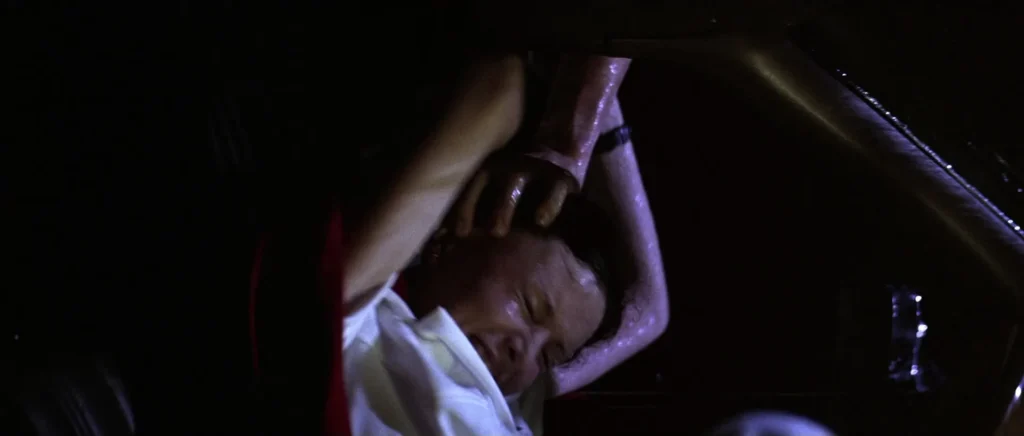By Brooke Kelly
“John Carpenter’s Perfect Villain” was originality written for a class analyzing the development of different genres in film.

Perhaps one of the most iconic horror films of all time makes brilliant use of the cliché horror holiday, John Carpenter’s 1978 success, Halloween. The heartbeat of any horror film the reaction it invokes from the audience, and, through his character, Michael Myers, Carpenter created the blueprint on how to make a truly terrifying villain: one that is inhuman, but in a believable way.
From the Beginning
Halloween opens with a bloody scene, comprised of shots taken from the perspective of a six-year-old Michael Myers, who stabs his teenage sister to death on Halloween night. Because this opening scene is shot from Michael’s perspective, the audience does not see the violent culprit until after the crime is committed. This not only creates suspense from the beginning, but it delays a reveal that would not have been as effective before the murder takes place: this killer is a little boy. At the end of the scene, the camera zooms out to capture a small child, wearing a clown costume, murder weapon in hand, and this shock completely reframes the opening scene, enhancing the horror of it.

The fact this small, innocent child committed such a brutal and powerful builds a frightening idea of who Michael Myers is, setting up a lack of empathy, a confident lust for blood, and an inhuman strength. However, if Carpenter had chosen to show the immature murderer before the vicious act, the tension present in the scene wouldn’t have held the same weight. After all, who is going to buy that a six-year-old could be capable of that brutality? Delaying this reveal helps the audience suspend their disbelief. If we know before the murder occurs that the assailant is a six-year old, we might feel that the story is a little more outlandish, but—because we’ve already accepted the grisly murder—the audience has, essentially, already bought the fact that a child committed the murder.
The following scene uses the backdrop of a dark and stormy night, as a nurse and a doctor drive to a sanitarium to meet Michael Myers, fifteen years after the first scene. The doctor—Loomis—refers to Myers as “it” rather than “him” despite being corrected by the nurse, introducing the idea that Myers is in some way inhuman. The characters’ anxiety throughout the scene is contagious as they set up details regarding the last fifteen years of Myers’ life. Perhaps most notably, the killer has not spoken a word in the fifteen years since the murder, a detail that is believable enough for the audience to accept without question but unusual enough to be unsettling. Then, the characters encounter patients of the sanitarium wandering outside the entrance of the facility, and the question lingers between the characters and the audience—where is Michael Myers? Before long, Myers demonstrates his adult strength by overtaking the car and driving off, leaving Loomis and the nurse stranded. This scene is the audience’s first glimpse into the version of Michael Myers who will be terrorizing the characters throughout this film. For a majority of the scene, Myers himself is offscreen, a looming presence that defines the scene despite not being shown past an arm delivering violence to the pretty young woman. This scene is relatively straightforward and serves to establish both Myers’ strength as an adult and his cunning. A character that has spent fifteen years locked up is competent enough to overpower the characters and drive away with enough skill and knowledge of traffic laws not to draw attention to himself. Myers is powerful, intelligent, and lacking human empathy.

Proving Formidability
As the film continues, Myers looms over Laurie and her friends on Halloween night, waiting for an opportune time to recreate his sister’s demise. Before Myers strikes again, Carpenter continues to set up this perfect villain, with his buyable inhumanities. He often pops up in the background of scenes, almost mocking characters such as police officers and Loomis, who are anxiously looking for Myers in an attempt to stop his imminent killing spree. Another one of Myers’ haunting qualities is how quickly he disappears from scenes, despite the audience never seeing him run. It is plausible that in the time Laurie looked away from her bedroom window, Myers’ could have moved, but the seeming ease at which he does so is incredibly unsettling. Of course, the characters are unsuccessful, and Myers begins attacking Laurie’s friends, starting with Annie, who he kills in a car, mirroring his attack at the sanitorium. Myer’s first killings are obviously frightening and display the threat the character presents, and Carpenter continues the strategy of keeping Myers and the violence he inflicts largely off-screen, allowing the audience members’ imaginations to run wild and prey on each individual’s idea of what would be most horrifying.
During the climax of the film, when Myers’ is attacking Laurie and the two children she is looking after, is when Myers’ inhuman characteristics really come to life. At this point in the film, the audience has suspended their disbelief enough to easily accept not only Myers’ unstoppable strength, but his seeming inability to be harmed or killed. When Laurie stabs Myers with a knitting needle, the audience briefly thinks she has won, but Myers gets up, the audience understands that Myers cannot be stopped—and that is what makes him the perfect, most horrifying villain. As he continue to get back up after what looks like fatal injuries, Myers becomes less of a man and more of a supernatural killing machine in the eyes of the audience.
In this iconic scary movie, Carpenter creates and utilizes a brilliant blueprint for a threatening horror villain. He eases the audience into the world of Micheal Myers, and the way he slowly allows the audience to suspend their disbelief as Myers demonstrates more and more strength leaves the audience with the terrifying feeling that a Micheal Myers could exist in our own world as well.
